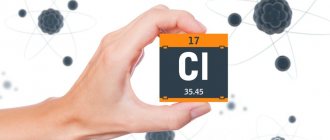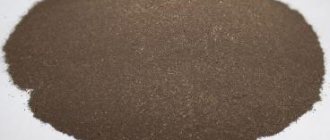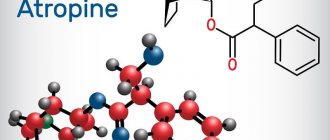What substances can cause poisoning?
Milady Intoxication has a huge number of reasons and reasons to poison, and in her arsenal there are many exogenous and endogenous poisons.
Exogenous toxic substances enter the body from the outside. That is, through the skin and mucous membranes, the upper respiratory tract, and the digestive tract. The most common cause of intoxication is poisoning with ethanol, methanol, heavy metal salts, household chemicals, carbon monoxide, poor-quality food, contaminated water, and medications.
Microbes, penetrating into the body, cause not only disease, but also poisoning with their toxins. The “reason” for exogenous intoxication of the body can, for example, be poisonous representatives of flora and fauna, the pale grebe and puffer fish.
Endogenous poisons are formed in the human body as a result of metabolism, as a consequence of diseases and various pathological conditions: for example, cancer intoxication (with the development of malignant tumors), uremia (with chronic renal failure), thyrotoxicosis (with increased production of thyroid hormones), tuberculosis intoxication and so on.
If the detoxifying function of the liver is insufficient, a large amount of toxic metabolic products accumulates in the body, leading to endogenous intoxication. With complications of diabetes, the body is poisoned by products of carbohydrate metabolism - ketone bodies.
What is alcohol intoxication: causes and mechanisms of development
Alcohol absorption occurs very quickly. Within 5 minutes, ethanol is detected in the blood and penetrates the blood-brain and placental barrier. Its concentration reaches its peak after 1.5–2 hours. The process is accelerated when drinking alcohol on an empty stomach; the absorption of ethanol is slowed down by rich food, especially rich in proteins and fats.
The central nervous system is most sensitive to the effects of alcohol. Severe alcohol poisoning is characterized by impaired consciousness, decreased severity of reflexes, and relaxation of skeletal striated muscles. During the next, even deeper phase of intoxication, a coma is possible, which without emergency help can be fatal due to the toxic effect of ethanol on the hypothalamus, brain stem and respiratory paralysis.
The severity of complications in acute alcohol poisoning is determined not only by the amount of alcohol consumed, but also by the duration of the toxic effect. The lethal dose of ethanol ranges from 4 to 12 g/kg body weight (on average, this is 0.3 liters of pure, 96% alcohol). But sensitivity to drinking increases in old age and with:
- overwork;
- insufficient nutrition and sudden changes in diet (for example, following a strict diet, refusing certain foods due to allergies, etc.);
- liver diseases, diabetes mellitus, pancreatic pathologies;
- taking certain medications;
- stress.
Ethanol has a pronounced cytotoxic effect and causes irreversible disturbances in cell function. In addition, alcohol:
- increases heat transfer, which, combined with a decrease in temperature sensitivity, is fraught with serious consequences, especially in the cold season;
- disrupts the production of hormones and the release of neurotransmitters;
- has a diuretic effect;
- increases the secretion of hydrochloric acid and mucus in the stomach.
The toxic effect of alcohol and many of the symptoms that occur during alcohol poisoning are also caused by an excess of acetaldehyde formed during its breakdown.
How does intoxication manifest itself?
Signs of intoxication depend on the nature of the toxic substance, its quantity, routes of entry into the body and ability to accumulate.
Toxic substances are divided depending on their effect on:
- carcinogenic (cancer-causing);
- mutagenic (leading to mutations);
- cardiotropic (heart muscle is affected);
- hepatotropic (liver intoxication) and others.
Symptoms of intoxication depend on the severity of poisoning:
- light;
- average;
- heavy.
Intoxication can be acute or chronic.
Acute intoxication occurs when poison enters the body once and is accompanied by pronounced symptoms. For example, food intoxication due to salmonellosis, alcohol intoxication.
Acute intoxication in a child occurs due to influenza, intestinal infection, drug overdose, food poisoning, and acetone syndrome. Competent parents know how to relieve symptoms of intoxication at home - they give the baby a drink and give Enterosgel sorbent (not forgetting to call a doctor).
Chronic intoxication occurs with long-term accumulation of toxic substances in the body, for example, cancer intoxication, lead poisoning, tuberculosis intoxication, drug addiction.
...and did you know that
In Moscow, every twentieth patient delivered by ambulance to city hospitals is diagnosed with acute poisoning.
In the structure of the causes of acute poisoning:
- 80% of cases are due to erroneous intake of a chemical substance;
- 18% of cases - an attempt to commit suicide (suicide);
- 2% of cases are intoxication at work.
Treatment
Measures to treat intoxication depend primarily on what causes the syndrome. However, the main goal of doctors in this case is to intensify the cleansing of the body from poisons that poison it. Reducing the symptoms of intoxication itself may in some cases be a therapeutic measure that will affect the course of the underlying disease. By cleansing the body of toxins, the manifestations of other diseases may decrease, as well as the risk of complications. All manipulations that doctors carry out during intoxication are aimed at two goals: to normalize the functioning of the main systems and organs, as well as to cleanse the tissues of endotoxins. To maintain the body, medications are administered primarily to protect the liver, normalize the level of minerals, especially potassium, and also to restore the acid-base balance of internal environments. Measures are also being taken to normalize kidney function and improve blood flow.
Intoxication of the body when working in hazardous industries
Why did the Mad Hatter from Alice in Wonderland lose his mind? Perhaps it's all in the bag! Or rather, in the processing technology of the felt from which they are made. It turns out that in the 19th century mercury was used to process this material. Chronic intoxication of the body with mercury vapor causes progressive dementia. In England there was even a saying: “mad as a hatter.”
Occupational chronic intoxication these days, unfortunately, is also not uncommon. People who work for a long time in production associated with chemicals gradually accumulate toxic compounds in their bodies. For example, liver intoxication is not so uncommon in chronic lead poisoning.
Symptoms of intoxication in occupational benzene poisoning are associated with toxic effects on hematopoietic organs and blood cells.
Signs of occupational poisoning depend on the toxic substance entering the body.
Common signs of chemical poisoning:
- severe weakness;
- clouding of consciousness;
- dyspnea;
- changes in skin color;
- nausea and vomiting;
- in acute poisoning - loss of consciousness.
Detoxication in such cases is carried out in intensive care units or intensive care units.
Timely intake of Enterosgel sorbent at the first symptoms of intoxication will save you from the dangerous complications of poisoning or reduce its manifestations.
Features of exogenous intoxication
Exogenous intoxication is more often called poisoning.
Main reasons:
- food poisoning: food (poor quality, expired and/or contaminated with bacteria and viruses), as well as poisonous mushrooms;
- household: alcohol in large doses and its surrogates (methyl alcohol, ethylene glycol), acids and alkalis (citric acid, vinegar, pipe cleaners), household chemicals and cosmetics;
- medicinal: drugs and medications (if dosages are exceeded);
- biological: plant toxins, as well as poisons secreted by animals, reptiles (snakes), insects;
- production and transport: in case of violation of technologies with the release of harmful substances into the environment, man-made disasters, explosions of tanks in which volatile acids are transported (sulfuric, hydronitrous);
- radiation (in case of accidents at nuclear power plants, consumption of food contaminated with radionuclides).
Chemicals are used in almost any production, as well as in everyday life. The use of most of these substances is safe as long as proper precautions are taken to prevent their entry into the body. However, if inhaled, ingested, or in contact with skin or damaged tissue (wounds), enough toxins enter the body to cause intoxication.
Most common chemicals:
- toxic gases (carbon monoxide);
- salts of heavy metals (lead, mercury);
- household detergents;
- insecticides for controlling insect pests;
- low quality cosmetics;
- pesticides and nitrates used in agriculture.
Fertilizers and chemical plant protection products are not only dangerous in themselves if they enter the human body, but can also accumulate in plants. And even when consumed, they can even cause severe intoxication.
Food intoxication
Food intoxication - what is it? This term refers to poisoning as a result of eating food containing toxic substances, as well as microorganisms that can cause an infectious disease (for example, salmonellosis). The likelihood of such a pathology increases with chronic diseases of the gastrointestinal tract and weakened immunity.
Most often, acute poisoning occurs with dairy and meat products due to non-compliance with production technology, insufficient heat treatment, as well as violations of storage conditions and periods.
Clinical manifestations:
- chills, general weakness, sudden deterioration in health;
- increase in temperature (up to 39-40 °C);
- nausea, vomiting;
- diarrhea;
- abdominal pain (usually severe, cutting).
Intoxication in this case is one of the manifestations of the disease. If such changes occur, you should consult a doctor as soon as possible. It is also important to preserve the food that was likely the cause of the poisoning. Isolation of toxins and microbes in laboratory conditions speeds up diagnosis and ensures the selection of adequate and timely therapy.
Alcohol intoxication
Taking large doses of alcohol leads to disruption of the brain, mental disorders and autonomic (ensure the functioning of internal organs) dysfunction. The degree of intoxication depends not only on the amount of alcohol taken, but also on the duration of previous use and the biological characteristics of the human enzyme systems that neutralize alcohol.
Doctors distinguish 3 stages of alcohol intoxication:
- first (mild) - the amount of alcohol in the blood is less than 1.5 ‰ (ppm), mainly manifested by changes in the mental sphere (talkativeness, emotionality, decreased attention, impatience), as well as impaired coordination of movements, redness of the face, increased pulse, breathing and salivation;
- moderate, with a concentration of ethanol in the blood from 1.5 to 2.5 ‰, characterized by the appearance of neurological symptoms against the background of increased mental changes: slowed thinking, confusion of speech, disorientation in time and space, possible aggressiveness and rudeness, as well as an increase in unsteadiness of gait , speech disturbances, appearance of pallor, nausea and vomiting;
- severe, with a blood alcohol content of 2.5 to 4 ‰, life-threatening due to a sharp disruption of the function of internal organs: patients lose consciousness, the reaction to irritants disappears, the pupils constrict; if the level exceeds 4 ‰, respiratory arrest is likely with a fatal outcome.
However, with chronic intoxication (long-term alcoholism), patients can be exposed to higher concentrations of ethanol in the blood.
Signs of acute and chronic intoxication of the body
In case of acute intoxication of the body, the patient experiences:
- heat;
- headache;
- muscle and joint pain;
- nausea;
- vomit;
- diarrhea.
When exposed to strong poisons, there is a serious threat to life. In such cases, urgent hospitalization is necessary, since it is not possible to relieve intoxication at home!
Chronic intoxication may be accompanied by:
- weight loss;
- aversion to food;
- insomnia;
- depression;
- indigestion;
- anemia;
- decreased immunity;
- dermatitis;
- prone to allergic reactions and autoimmune diseases.
With a decrease in the body's defenses and a severe purulent infection, intoxication syndrome develops.
This condition may occur against the background of:
- peritonitis;
- pleural empyema;
- osteomyelitis;
- phlegmon;
- abscess;
- sepsis.
Severe intoxication of the body leads to toxic damage to the heart muscle, nervous system, liver and kidneys.
Palpitations, depression of consciousness or euphoria, kidney and liver failure are the main signs of intoxication syndrome.
The diagnosis is made through blood tests and the leukocyte index of intoxication. This important research method makes it possible to assess the severity of endogenous intoxication and the effectiveness of the treatment.
Normally, the values of the leukocyte index of intoxication range from 0.3 to 1.5. An increase in values from 4 to 9 indicates endogenous poisoning.
Endogenous intoxication
With all pathological processes leading to tissue destruction, increased breakdown of substances (catabolism) and a sharp disruption of the body’s cleansing systems, general endogenous intoxication occurs. More often it is chronic, but when any organ is disabled (for example, in acute renal failure), acute pathology develops.
Main reasons:
- excessive formation of toxins as a result of severe inflammation (peritonitis (inflammation of the peritoneum), acute pancreatitis, burn disease, prolonged limb compression syndrome (for example, in an accident), severe pneumonia);
- absorption of toxins from a limited infectious focus or area of decaying tissue (intestinal obstruction, purulent processes (cellulitis and abscesses));
- entry into the blood of toxins from tissues in which blood circulation has been impaired for a long time (shock, as well as a sharp restoration of blood flow during extensive myocardial infarction);
- disruption of the systems that cleanse the body (renal and liver failure);
- malignant neoplasms, when toxic metabolic products of tumor cells are absorbed into the blood, as well as during the destruction of tissues affected by the tumor;
- chronic, long-term infections, when large volumes of tissue are gradually affected, a large amount of toxins are formed that the weakened body cannot remove (tuberculosis, brucellosis).
Recently, researchers have also proven the presence of endogenous intoxication in skin diseases: psoriasis, atopic dermatitis, toxic dermatitis.
Despite the large number of causes of endogenous intoxication, the clinical manifestations of various pathologies are similar to each other. Therefore, doctors separately distinguish intoxication syndrome.
Symptoms:
- gradually increasing general weakness, weakness, malaise, deterioration in performance;
- headaches of aching, pressing nature;
- muscle pain;
- nausea, frequent gagging and vomiting;
- increased heart rate;
- dry mucous membranes, pale skin;
- weight change (loss);
- periodic increases in body temperature that are difficult to treat.
Features of intoxication in tuberculosis
Tuberculosis is a chronic infection, often poorly manifested and often without signs that clearly indicate this disease. Intoxication syndrome may precede the appearance of symptoms associated with affected organs (for example, cough, shortness of breath, hemoptysis in pulmonary localization, changes in urine tests in cases of kidney damage).
Against the background of the general symptoms of intoxication described above in tuberculosis, enlargement of peripheral lymph nodes may appear, as well as lymphadenitis (inflammation of the node) or periadenitis, when the surrounding soft tissues are also involved in the process.
Children often experience bronchitis (with a wet cough and sputum), and infants are likely to experience abdominal pain, frequent vomiting, and an enlarged liver and spleen.
“Household” intoxication or “reality poisoning”?
It is not for nothing that household poisoning is called the “epidemic of the century”, because quite often the means that are supposed to make our life easier become the cause of acute intoxication. Bleach, pesticides, detergents and cleaners, car windshield wipers - the list of potentially dangerous culprits of severe poisoning is quite extensive.
The number of poisonings due to the erroneous use of household chemicals, especially by children, has increased significantly in recent years. Cases where children's curiosity ends tragically are not so rare in everyday life: either a two-year-old girl swallows a “Mole” for cleaning pipes, or an older boy decides to try a powerful detergent advertised on TV.
After intoxication with household chemicals, acute renal and liver failure occurs. Stopping the work of these vital organs that remove toxins from the body can, in some cases, even lead to the death of a person.
Poisoning with ethanol and its surrogates
According to the World Health Organization, more than 300 thousand people die annually from intoxication with alcohol and its substitutes.
According to the international classification (ICD10), the toxic effects of alcohol are coded as T51.
One of the largest cases of poisoning with surrogate alcohol occurred in the Estonian city of Pärnu in 2001: workers at one of the plants stole 20 canisters of methyl alcohol. As a result, 68 people died from poisoning, and 43 became disabled after intoxication.
Methyl alcohol is a potent poison of the vascular and nervous system. It is quickly absorbed and very slowly eliminated from the body.
Typical results of methanol poisoning are blindness, cerebral edema, and cardiac and respiratory arrest.
How to treat intoxication?
Therapy for exogenous and endogenous intoxication of moderate and severe severity is carried out in intensive care units, intensive care units, and toxicology centers.
Treatment of acute and chronic intoxication is carried out taking into account the cause of poisoning, the severity of the patient’s condition, the results of laboratory and instrumental studies.
Removing intoxication in each specific case has its own differences.
Treatment of cancer intoxication is palliative, that is, drugs are prescribed that improve the quality of life of an incurable patient. For cancer intoxication, narcotic analgesics (morphine), sorbents (Enterosgel), and nonsteroidal anti-inflammatory drugs are prescribed. In a hospital setting, a drip is performed for intoxication with the administration of drugs that remove toxins from the body.
Therapy of tuberculosis intoxication involves a long course of treatment with anti-tuberculosis drugs, vitamins and immunostimulants.
For household and professional poisoning, antidotes (antidotes), detoxification of the body, gastric and intestinal lavage are used to cleanse toxic substances.
Enterosgel intestinal sorbent will help quickly and effectively relieve intoxication at home in case of poisoning.
Enterosgel and poisoning
The drug can be used for intoxication, both acute and chronic, as well as at all stages of treatment (in first aid, first aid, hospital, specialized, at the rehabilitation stage).
Unlike other drugs for similar purposes, the drug is approved for use in children from the first days of life, and is also indicated for pregnant and lactating women.
Enterosgel even removes bacterial endotoxins, promotes the regeneration of damaged mucosa and normalizes the intestinal microflora.
Thus, the functioning of the intestines and immune system is restored. At the first signs of possible poisoning, you can take Enterosgel in a standard dose. Then use the drug according to the instructions for 1-2 weeks.
A sufficient amount of water consumed and laxatives contribute to the rapid removal of toxic products from the body.
Liver protection medications, digestive enzymes, and anti-dysbacteriosis medications will also help relieve intoxication at home.
Liver toxicity
Liver intoxication can occur as a result of poisoning with toxic chemicals, alcohol, drugs and medications. It can also occur due to endogenous intoxication due to cancer, infectious diseases, and diabetes. The main reason in this case will be disturbances in its enzyme system and the inability to ensure the neutralization of toxins.
Liver intoxication can be either acute or chronic. Acute occurs in the first hours and days after the intake of toxic substances from the outside (for example, the venom of the toadstool), chronic - develops with endogenous intoxication lasting more than 6 months.
Possible complications:
- cirrhosis of the liver;
- hepatitis;
- liver failure.
This pathology not only dramatically worsens the patient’s health, but without appropriate treatment can lead to death.
How to relieve alcohol intoxication?
Unfortunately, the morning after a festive “alcoholic evening” is not always good. My head is pounding, my mouth feels like the Sahara Desert, my heart is pounding somewhere in my throat, it’s cloudy and stormy, a cat is loudly stomping around the apartment - a nightmare, in a word!
Mild alcohol intoxication, or, more simply, a hangover, is usually treated at home.
What needs to be done: get enough sleep, take Enterosgel sorbent on an empty stomach, be sure to have breakfast and drink clean water throughout the day.
A drip for alcohol intoxication at home can be prescribed if you need to immediately “get back on track.”
Clinical picture of alcohol intoxication
In narcology, there are several stages of intoxication, which correspond to a certain concentration of ethyl alcohol in the blood.
Mild degree (0.5–1.5‰)
Characteristic:
- a good mood;
- feeling of cheerfulness, pleasure, complacency, playfulness, sympathy for others;
- self-confidence, increased self-esteem;
- talkativeness;
- excessive expressiveness of gestures and facial expressions.
Impaired coordination of movements is insignificant, speech is fast and loud, but the person is aware of what is happening, logic and consistency of thinking are maintained. This state lasts from 30–40 minutes to 2 hours, after which the mood normalizes, then psychomotor agitation disappears.
Medium degree (1.5–2.5‰)
A benevolent, high mood is replaced by anger, irritability, aggression, shame is dulled, unceremoniousness and tactlessness are characteristic, and traits of sexual promiscuity appear in behavior. Hidden grievances, unpleasant memories emerge in the memory, a feeling of jealousy and injustice appears.
Speech becomes very loud, but monosyllabic and slow: a drunk person finds it difficult to find words to express his thoughts and emotions, and makes obscene statements. His own rude, inappropriate jokes seem very funny and witty to him. The situation is only partially realized, coordination of movements is impaired.
This stage of alcohol intoxication of the body lasts several hours, after which drowsiness suddenly appears or slow sobering occurs. It is accompanied by severe weakness (can persist for several days), thirst, depressed mood, and lack of appetite. The events that took place are partially amnesic.
Severe degree (up to 5‰ and above)
The connection with reality is almost completely lost, speech is usually absent or only individual words and inarticulate sounds are pronounced. A drunk person does not understand the speech of others. Coordination of gait and movements is grossly impaired; somatovegetative symptoms include:
- decrease in temperature;
- hypotension;
- nausea and vomiting;
- urinary and fecal incontinence.
In severe cases, the onset of stupor and alcoholic coma is possible. Sobering up occurs very slowly, takes at least 2–4 days, and is accompanied by an aversion to food and sleep disturbances.
Rare forms of alcohol intoxication
- Atypical. Usually occurs against the background of neurological pathologies. It manifests itself as spontaneous outbursts of irritability and physical aggression, hysterical attacks. The behavior is demonstrative in nature, for example, suicide attempts in full view of others. Sometimes a person commits impulsive, inappropriate actions (theft, arson, exhibitionism).
- Pathological. Accompanied by short-term psychoses, it develops after drinking even small doses of alcohol with concomitant organic brain lesions and severe chronic diseases. Attacks of uncontrollable rage, motor automatisms, and delusions of persecution are possible. Actions cannot be explained logically. This state usually ends in deep sleep.










